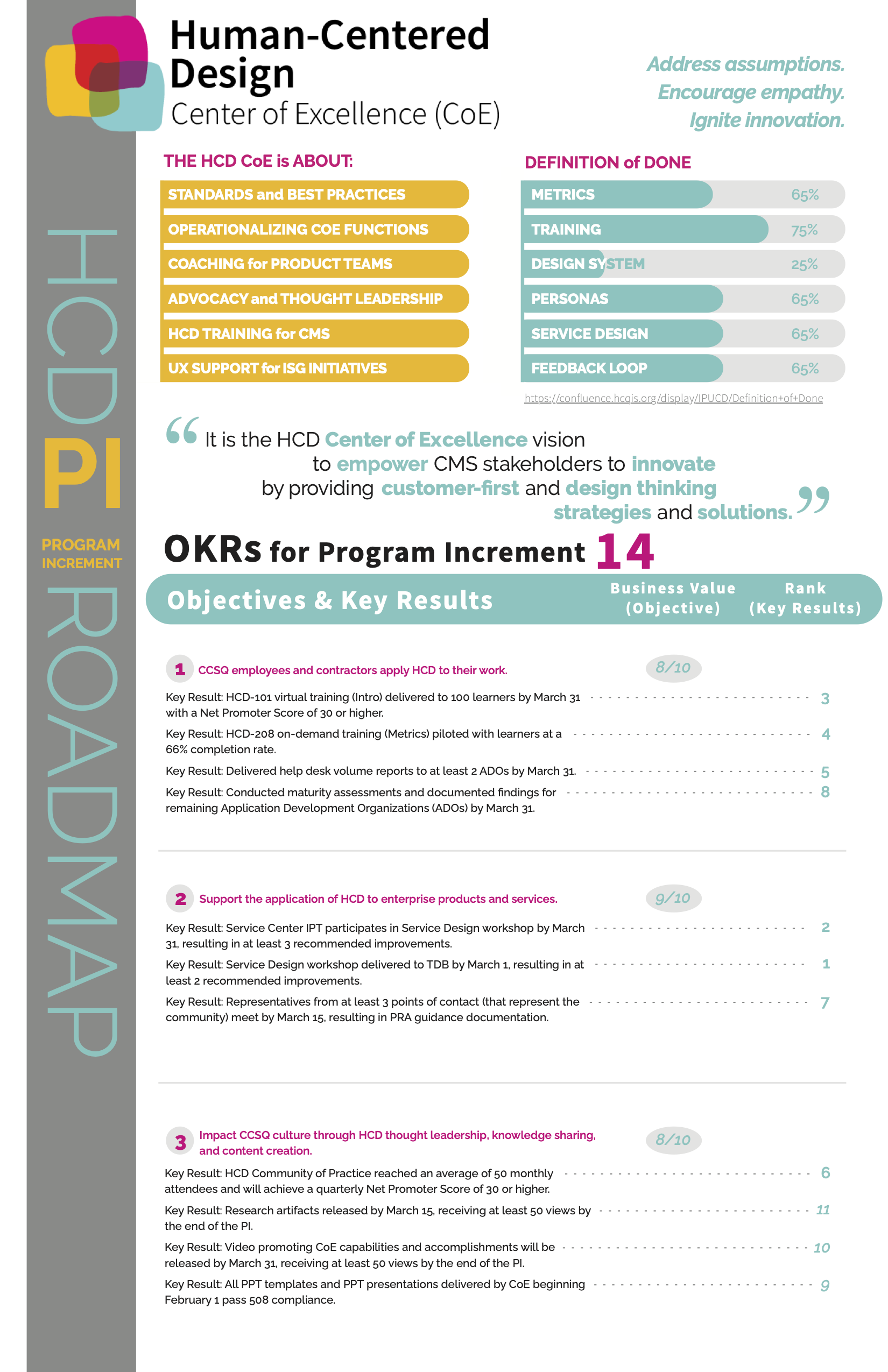
Many organizations are adopting data-driven frameworks to inform their business strategies. To complement continuous improvement approaches to getting work done, including lean, agile, and human-centered design, organizations are looking to become more intentional in developing their business goals and objectives. One such framework is OKRs, or Objectives and Key Results, authored and championed by John Doerr in his work, Measure What Matters - How Google, Bono, and the Gates Foundation Rock the World with OKRs.
I've long worked in product and service design work contexts where the team follows, or tries to follow, agile approaches to getting work done. Along the way I've acted as both product owner and product manager, and even received a SAFe certification to add authority to my experience. During my time supporting the Centers for Medicare & Medicaid Services (CMS), I've set up my team so that we scrum. We approach our work in 12 week program increments (PIs) and have six two-week sprints. We've worked with the client to ensure that our planned work achieves expectations for high business value. Yet when I became familiar with John's work, I decided to add those ideas into how we approach PI planning.
Before the team even attends the PI planning event, we spend a fair amount of time identifying the work that we feel would add high value for CMS. Of course this too is socialized with the client, so people have some idea of the work to be accomplished. But during the PI event, we work with the client to revisit our Objectives (these often reflect the "true north" for our team and may not change quarterly). What changes are our Key Results. We work with the client to really address what success should look like each quarter, and we tie it to things that can be measured. In addition, something I really like doing with the client is to have leadership prioritize planned work by rank ordering each of the committed key results, so that the teams doing the work can adapt and make decisions that will impact the priorities laid out before them by the client.
As the image on this page can reflect, OKRs can be applied to any type of work. While much of my career has focused on delivering digital products, my current role has focused much more on the delivery of services, which may include training, coaching, and more. We take these committments and turn them into a printable document for each team member to keep in their work area. Because as we go about our day to day work, we need to be have continual focus on the shared expectations we committed to with our teams and our client.
The biggest wins to this approach we've taken to our work is two-fold. First, we've created a great team culture that effectively communicates with one another and other stakeholders because we are aligned on the goals of our work over 12 weeks. If there's any confusion, we point back to our document. And while we do not measure velocity and capacity efficiencies over time like others may do, we focus on measuring what success looks like, and that only happens by working with teams to define that from the get-go.
Second, since our team has been working very effectively, we've noticed that other teams are asking for us to teach them more. "Show us how you plan PI events with the client" or "How are you creating objectives and key results?" or "Show us how you are conducting these planning sessions virtually so that everybody participates." Most important, the client is very happy with our work and we are solidly aligned in crafting a shared vision for our team's work and value to the enterprise.